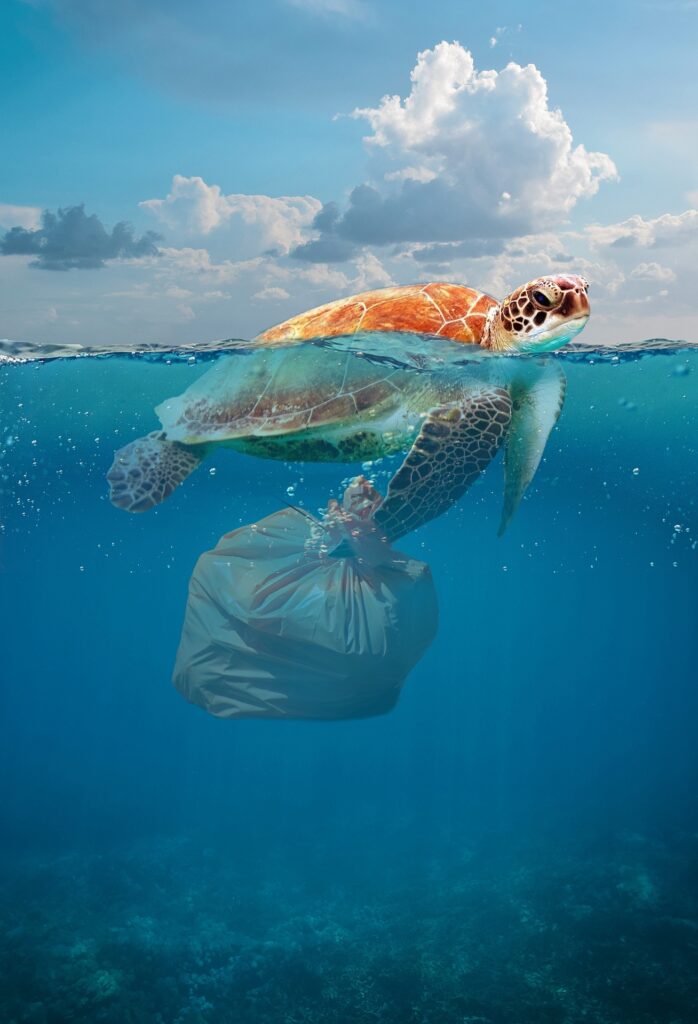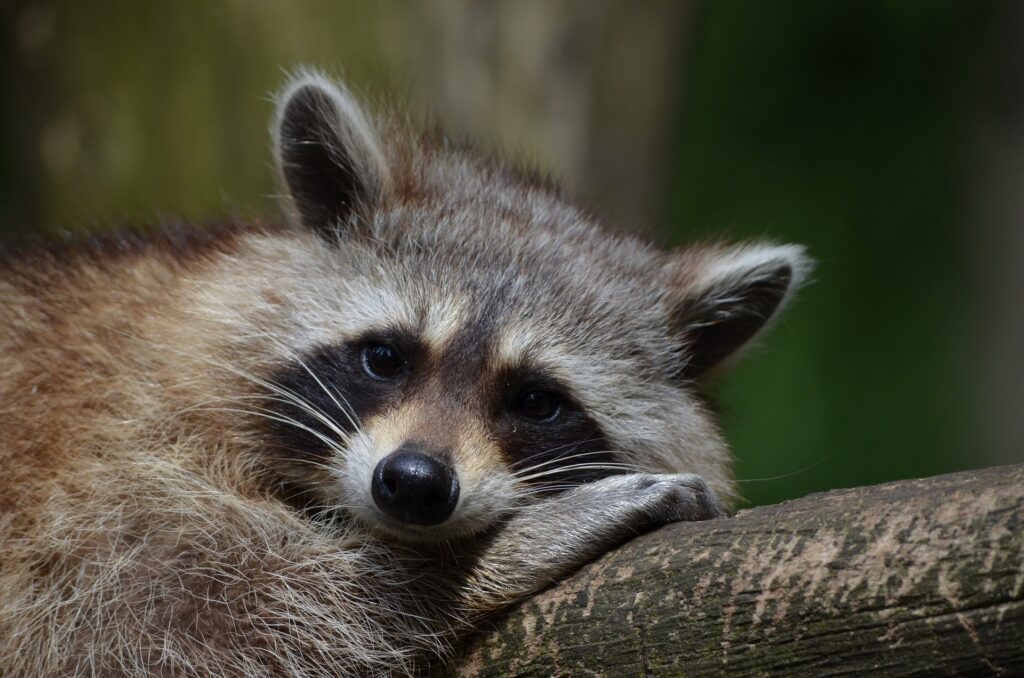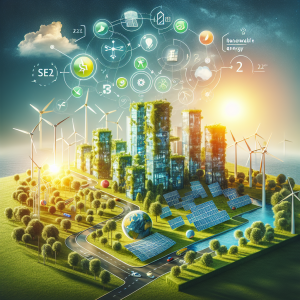Introduction
Contamination in Composting Streams is an increasingly pressing issue that undermines the effectiveness and sustainability of waste management systems across the globe. As composting gains popularity as a greener alternative to traditional landfill disposal methods, the introduction of non-compostable materials into composting streams complicates the process, reducing its efficacy and environmental benefits.
In essence, contamination disrupts the biological decomposition process, produces poor-quality end products, and can even release harmful substances into the environment. In the quest to make composting a mainstream waste management strategy, it is crucial to understand the factors contributing to contamination.
This article explores five such factors that exacerbate the problem, offering insights into how stakeholders, from individual households to large-scale waste management companies, can work collaboratively to mitigate contamination risks.
Firstly, the lack of public awareness about what can and cannot be composted is a significant driver of contamination. A multitude of materials—from plastics labeled as ‘biodegradable’ to grease-soaked pizza boxes—end up in composting streams due to misinformation or confusion among consumers.
Secondly, the absence of standardized labeling on product packaging further confuses consumers, leading to accidental contamination. For instance, a product labeled as ‘green’ or ‘eco-friendly’ may not necessarily be compostable, creating a disconnect between consumer perception and actual composting guidelines.
Third, inefficient sorting systems at composting facilities themselves can contribute to the problem. Even with the best of intentions, if a composting facility lacks the technology or manpower to accurately sort incoming materials, contamination is almost inevitable.
Fourth, policy gaps and regulatory loopholes allow certain types of waste, such as industrial by-products, to be introduced into composting streams without adequate scrutiny. These materials can introduce heavy metals, chemicals, and other pollutants that are not only harmful to the compost but can also leach into the soil and water systems, causing broader environmental harm.
Finally, economic incentives that prioritize the quantity of waste processed over the quality of the end product can encourage practices that result in contamination. For instance, some waste management contracts may be structured in a way that incentivizes high throughput, encouraging facilities to process more waste, irrespective of contamination levels, to meet targets or gain financial bonuses.
By examining these five contributing factors, this article aims to offer a holistic view of the challenges facing contamination in composting streams. Addressing these issues is not merely a technical challenge but a societal one, requiring the concerted efforts of individuals, communities, corporations, and governments alike. With a better understanding of the root causes, stakeholders can develop more effective strategies to minimize contamination, thereby preserving the integrity of composting as a sustainable waste management practice.
Contamination in Composting Streams: Unveiling the Hidden Perils
Composting, often celebrated as a nature-driven recycling miracle, plays a pivotal role in steering us toward a greener, more sustainable future. The magic of watching kitchen scraps and yard waste morph into nourishing soil amendments is almost poetic. However, behind this ecological symphony lies an issue that challenges the very essence of composting—contamination in composting streams. This article serves as an all-encompassing guide to help you understand, combat, and conquer this lurking menace. So, fasten your seatbelts as we dive into the world of decomposition, renewal, and the unexpected twists contamination brings to this narrative.
Navigating the Landscape of Contamination
In a world where eco-consciousness is gaining momentum, composting stands as a beacon of environmental responsibility. Yet, the serenity of this virtuous cycle is disrupted by the insidious infiltration of contaminants. Imagine a heap of organic waste, destined to nurture the earth, infiltrated by non-biodegradable plastic, toxic chemicals, and other undesirables. Contamination in composting streams is not just a challenge—it’s a puzzle that demands our immediate attention. From backyard composters to industrial facilities, the menace of contamination looms large, endangering the very core of this sustainable practice.
Welcome to the backstage of composting, where the drama of decay unfolds. While composting’s essence remains one of nature’s most beautiful choreographies, contamination sneaks in as an uninvited character, threatening to upend the whole performance. Imagine this scenario: You lovingly nurture a compost pile, envisioning the bountiful garden it will feed. Yet, lurking within are tiny shards of plastic, remnants of the modern world, polluting the very earth you seek to enrich. It’s a cautionary tale that calls us to explore the complexities of contamination in composting streams.
The Types of Contaminants: A Rogue’s Gallery
Understanding the scope and gravity of contamination in composting streams requires a detailed examination of the types of contaminants commonly found. Each contaminant brings its own set of challenges, necessitating a multi-faceted approach to contamination management.
Plastics: The Insidious Invaders
Plastics are perhaps the most ubiquitous and easily recognized contaminants in composting streams. They range from microplastics, which are often too small to be easily filtered out, to larger items like bags, bottles, and utensils. The problem with plastics lies in their durability and resistance to decomposition.
Unlike organic matter, which can break down within weeks or months under the right conditions, plastics can take hundreds or even thousands of years to fully decompose. Moreover, some plastics release toxic chemicals as they slowly break down, posing additional risks to the soil and, eventually, to the food chain. Technologies like bioplastics and compostable plastics have been developed, but they often require specific industrial conditions to break down fully and can also be a source of confusion for the consumer.

Metals: Hidden Among the Organic
Metals like aluminum, iron, and copper often find their way into compost heaps, mostly through accidental inclusion. These metals are typically non-biodegradable and can disturb the micro-ecology of the composting pile. Additionally, they can leach into the soil, leading to potential toxicity and soil imbalance.
Some metals are even harmful when ingested by animals or humans in trace amounts over time. Unlike plastics, metals can be more challenging to spot amidst a pile of decaying organic matter, making them more likely to remain undetected until the composting process is complete. While some composting facilities use magnets or metal detectors to remove metallic items, these technologies are not universally adopted due to cost constraints.
Chemicals: The Invisible Disruptors
Chemicals form a particularly insidious category of contaminants as they can be invisible and often go unnoticed until their harmful effects manifest. These can range from household cleaning agents to pesticides and industrial solvents. Chemical contaminants can disrupt the microbial activity crucial for effective composting, render the resulting compost toxic for plants and animals, and contaminate groundwater.
Some chemicals can even react with organic matter to form new, potentially toxic compounds. Household items like batteries and electronic waste are common sources of dangerous chemicals like lead and cadmium, which can be highly detrimental when introduced into composting streams.
Glass and Ceramics: The Fragile Foes
Although not as common as plastics or metals, glass and ceramics are occasionally found in composting streams. Similar to metals, these materials are non-biodegradable and pose a risk of physical harm during the compost application process. Shards of glass can be hazardous to both humans and animals and can also damage agricultural equipment. Ceramics, although less harmful, can still contribute to the poor quality of the finished compost and are also difficult to remove once integrated into a compost pile.
Organic Contaminants: The Misleading ‘Natural’ Invaders
Organic contaminants like meat, dairy, and oils might seem like suitable candidates for composting given their organic nature, but they often cause more harm than good. These items can attract pests, produce unpleasant odors, and slow down the composting process by creating anaerobic conditions. Moreover, some organic materials might contain pathogens or chemicals like preservatives, which could be harmful in a composting environment.
By dissecting the rogue’s gallery of contaminants, we gain valuable insights into the complexities of maintaining clean composting streams. Each type of contaminant demands a specialized approach for removal or neutralization, calling for a blend of technological, educational, and regulatory solutions. The success of any composting initiative hinges on our collective ability to address each of these challenges comprehensively.
Down the Rabbit Hole: How Contamination Sneaks In
Contamination’s ability to infiltrate composting streams is a testament to its ingenuity. Imagine a gust of wind lifting lightweight plastic particles, depositing them amidst your organic waste. Or a moment of haste leading to the disposal of non-compostable items into the pile. These seemingly innocent actions serve as gateways for contaminants, initiating a sequence of events that challenge the very integrity of composting. It’s a journey down the rabbit hole of unintentional compromise.
As we delve into these intricate methods, the hidden entryways of contaminants are revealed, each contributing to contamination in composting streams in unique ways. Understanding these various avenues is critical for developing effective interventions to reduce contamination and improve compost quality.
Wind: A Silent Carrier
Wind is often overlooked as a significant factor in contamination. It acts as a carrier for lightweight materials, such as plastic bags, wrappers, and even small pieces of aluminum foil, which can easily be blown into composting bins or heaps. The contaminants are not limited to synthetic materials; natural debris like seeds of invasive plant species can also be carried by the wind into compost piles, impacting the quality of the finished compost.
Given that wind direction and speed are highly unpredictable, it becomes a challenge to set up barriers that are completely effective. Strategies like setting up wind shields or placing composting areas in less windy locations can help, but eliminating this source of contamination entirely may be challenging.
Sorting Slip-Ups
Sorting is a crucial step in any composting process, and mistakes here can have long-term consequences. These slip-ups often occur due to the complexity and time-consuming nature of sorting, coupled with human error. Busy lives and carelessness can lead to the unintentional mixing of non-compostable waste, such as glass or plastic, with compostable materials.
Some sorting mistakes occur because of misleading labeling, as some products labeled “eco-friendly” may not necessarily be compostable. Composting facilities also experience sorting challenges; when large volumes of waste are processed, it becomes increasingly difficult to remove every contaminant. Technological interventions, like advanced sorting machines equipped with sensors, can help to some extent but are not foolproof.
Unwitting Contributions
A lack of awareness among individuals significantly contributes to contamination. Many people don’t realize that not all organic waste is suitable for composting. For instance, meat and dairy products can attract pests and are typically not suitable for most home composting systems. Others may unknowingly add “compostable” plastics that require industrial composting facilities to break down fully, thereby contaminating home compost heaps. Educational campaigns and easy-to-understand composting guidelines can go a long way in solving this issue. However, these solutions require consistent and widespread implementation to be effective.
Transfer from Packaging
Even when people are careful about what they compost, contaminants can be introduced via packaging. These can include plastic films, stickers on fruit, metal clips on bags, and even small sachets of desiccants that sometimes come with food packaging. While these may seem trivial, they accumulate over time and can make a significant contribution to the overall contamination level in composting streams. Simple steps like thorough checking of organic waste before composting and advocating for eco-friendly packaging can mitigate this form of contamination.
Animal Meddlers
Wildlife, such as raccoons, birds, and even pets, can introduce contaminants into composting streams. For example, an animal may drag a piece of plastic or foil into a compost heap while foraging for food. In rural settings, larger animals like deer or bears could also contribute to this problem.
These “animal meddlers” are an often-overlooked source of contamination. Designing composting setups that are animal-proof can help to some extent, although it’s a challenge to create a system that is both accessible for human use and impenetrable to animals. Advanced composting containers with locking mechanisms can offer a potential solution.
By carefully examining these contributing factors, we can begin to develop strategies for each specific source of contamination. These strategies should not only involve technological solutions but also societal and educational initiatives aimed at increasing public awareness and engagement. By treating each source as a unique challenge, a multi-pronged approach can be developed to mitigate contamination in composting streams effectively.
The Domino Effect: Unraveling the Consequences
Contamination’s impact extends beyond a mere disruption of the composting process. It’s the beginning of a domino effect that reverberates through ecosystems. As non-biodegradables mix with the organic matter, the quality of the resultant compost diminishes. Nutrient-rich soil transforms into a toxic cocktail detrimental to plant growth and human health. This cascade of consequences underscores the critical importance of keeping contamination at bay.
Panning for Solutions: Mitigating Contamination
The battle against contamination requires an arsenal of strategies. Enhanced waste management practices, rigorous sorting techniques, and the deployment of advanced technologies form the front line. By tackling the problem at its source, we can prevent contamination from infiltrating composting streams. The collective effort to safeguard composting processes contributes not only to individual gardens but also to the greater ecological balance.
Educating the Masses: Raising Awareness
The war against contamination is also a battle for hearts and minds. Public awareness campaigns, community workshops, and educational initiatives are vital tools in arming individuals with the knowledge needed to identify, prevent, and mitigate contamination. By fostering a culture of understanding, we empower communities to embrace composting with an informed sense of responsibility.
Regulatory Landscape: Policies and Their Efficacy
Governments and organizations play a significant role in shaping waste management policies. However, the effectiveness of these policies in combating contamination varies. By examining the existing regulatory framework and its impact, we can better understand how legal measures can be optimized to prevent contamination. The role of governance in this battle cannot be underestimated.
The Bright Side: Success Stories and Inspirations
Amid the daunting challenges of contamination, rays of hope emerge from across the globe. Communities, industries, and individuals are banding together to combat contamination successfully. These tales of triumph inspire us to believe in the potential for change and innovation. They serve as a reminder that contamination is not invincible and that our collective efforts can pave the way for a cleaner, greener future.
The Curious Adventure of Rocky the Raccoon
So picture this: Our hero of the hour, Rocky the Raccoon, is out on a midnight escapade. Equipped with his tiny bandit mask and a nose for trouble, Rocky is the Indiana Jones of the urban jungle. Now, Rocky stumbles upon what he thinks is a treasure trove—a compost pile full of delicious leftovers and intriguing smells. “Ah, what do we have here? A buffet for the ages!” thinks Rocky.
But wait, Rocky’s not dining alone tonight. Stuck to his paw is a plastic wrapper from his earlier snack raid—a candy bar wrapper from Mr. Johnson’s trash can. Oblivious to the ecological faux pas he’s about to commit, Rocky leaps onto the compost pile, and the wrapper takes a free ride along with him. It nestles itself among the banana peels and coffee grounds, smug as a bug, thinking it’s hit the jackpot.
Ah, the irony! Here we have a compost pile, the epitome of environmental conscientiousness, invaded by a piece of plastic—a villain in the world of sustainability! It’s like inviting Darth Vader to a Star Wars cosplay and finding out he’s the real deal.
And so, the plastic wrapper starts its unintended journey in the compost pile, thinking it can mix and mingle like it’s part of the in-crowd. “I’ll just blend in with the apple cores and corn cobs; nobody will notice,” it figures. But the compost pile isn’t a place where just anyone can crash the party. Nope, this is a VIP club for decomposables only.
Meanwhile, the microbial bouncers in the compost are like, “Hey, who let this guy in?” The wrapper’s not breaking down, it’s just sitting there, throwing off the compost pile’s groove. It’s the wallflower at the decomposition dance, refusing to participate but messing up the vibe for everyone else.
The tale of Rocky and his plastic sidekick serves as a chuckle-inducing yet sobering reminder: contamination in composting streams is often accidental but always impactful. It’s a comedic collision of good intentions and unintended consequences, and it tells us that even when nature and human-made materials collide in the most innocent of ways, the environment often ends up with the short end of the stick. So the next time you’re tempted to toss something “iffy” into the compost pile, just think of Rocky and his misadventures. Trust me, it’s a party you don’t want to crash uninvited!

A Glimpse into the Future: Innovations in Composting
As we peer into the future, we glimpse a landscape where innovation reigns supreme. Smart sorting systems that can identify contaminants with unprecedented accuracy, biodegradable alternatives to plastics, and cutting-edge waste management technologies are poised to revolutionize the composting industry. These innovations, driven by the urgency to combat contamination, hold the promise of a more resilient and sustainable waste management system.
Closing Thoughts: A Call to Action
Contamination in composting streams is a call to arms for everyone invested in sustainable living. It’s a challenge that requires a united effort, transcending boundaries and backgrounds. As we draw the curtain on this exploration, the message remains clear: vigilance is our shield, education our weapon, and innovation our ally. By recognizing the threat of contamination, we can safeguard the integrity of composting streams and ensure a healthier, cleaner world for generations to come.




